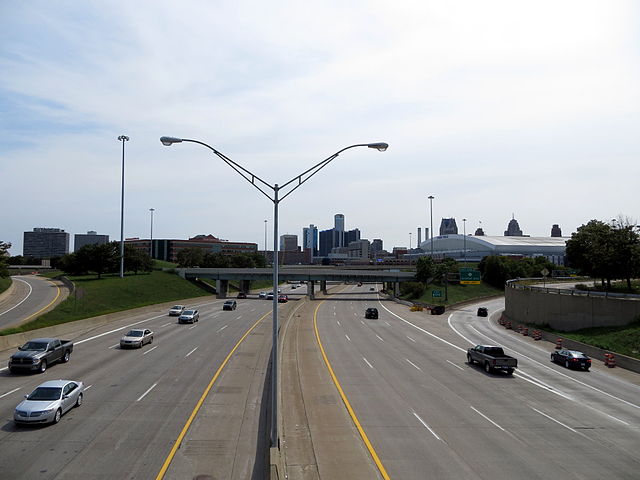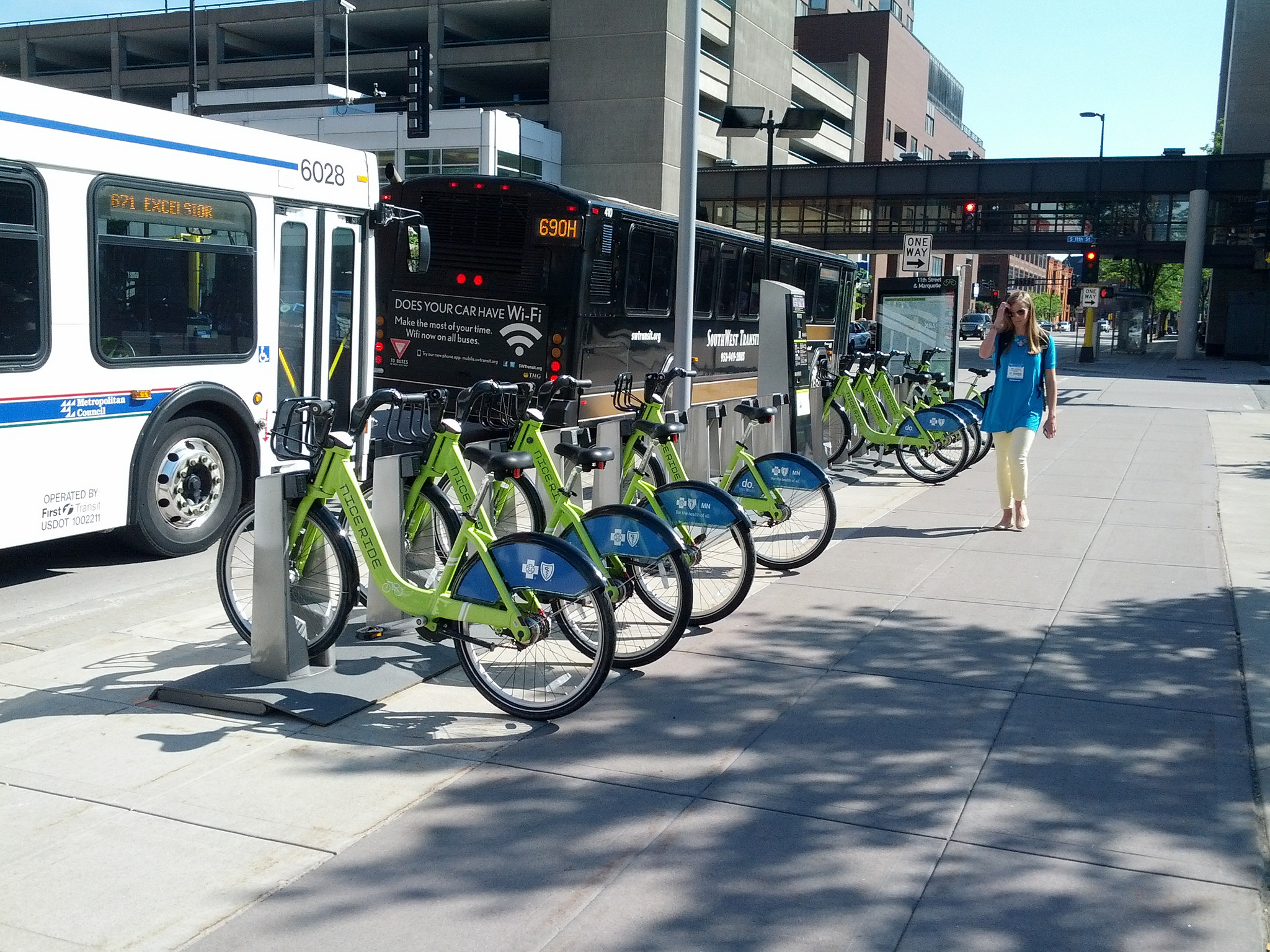Alana Miller
Policy Analyst
By setting goals, shifting priorities, thinking creatively and taking bold action, the Midwest has the opportunity reimagine "Motor City" – to dramatically reduce transportation emissions and build a transportation system that supports better lives.
Policy Analyst
Henry Ford and his first vehicle, the quadricycle, in 1896.
Just over 125 years ago, a man named Henry Ford tested a new invention on the streets of Detroit – the quadricycle. Within a decade, Cadillac, Ford and General Motors started manufacturing cars in Michigan – the start of a radical transformation to America’s cities and streets. Over the last century, the Midwest (indeed, most of America) has built its communities and transportation system in a way that requires most people to drive a personal car to meet their daily needs. Fossil fuel-burning cars and trucks travel more than 560 billion miles per year across the region, contributing to climate change, air pollution and degraded quality of life in our cities.

Modern freeway in Detroit. Credit: Sean Marshall via Flickr.
Across the Midwest, transportation is responsible for nearly 30 percent of carbon emissions – more than the industrial and residential sectors combined. But right now, we stand at a critical moment as new tools and consumer preferences create the potential for a historic transformation of how the Midwest travels, with benefits for our climate and our communities.
As our new report, The Road to Clean Transportation: A Bold, Broad Strategy to Cut Pollution and Reduce Carbon Emissions in the Midwest, shows, the Midwest’s transportation system could look dramatically different in the future, with visionary action and strong public policies.
Imagine: in 2050, someone stepping out of their house in the morning could choose from a wide variety of zero-carbon transportation options. Instead of just the car in their driveway, they could decide to take convenient and frequent transit, shared electric options, or a safe and comfortable walk or bike ride. Using these options would be possible because more compact design had brought destinations closer together, enabling shorter commutes to work or school and to amenities and community activities. Instead of relying on fossil fuels, transportation – including cars, buses, shared ride services and even bikes – will run on electricity, powered by clean energy.
Combined, these improvements will allow people to travel less, which means more free time to spend with family and friends and less energy consumed by transportation.
Bridging the distance between today’s reality and the vision for tomorrow may seem insurmountable. Achieving a safer, more accessible and less polluting transportation system will require some difficult choices and a transformation of how public policy is currently prioritized.

Minneapolis’ bikesharing system is one of the largest in the country. Credit: Eric Fischer via Flickr, CC BY 2.0
These are tall orders, but our analysis finds that they are increasingly within reach, thanks to a growing suite of tools now available to cities and states, including:
Taken on their own, each of these tools can help reduce emissions. But, as we’ve concluded in previous reports, the greatest benefits and the potential for truly transformative change, happens when the strategies are implemented together. For instance, compact development patterns can enable more people to walk and bike, and can facilitate connections with public transportation, unlocking the potential for even greater emissions reductions. We also know that adopting these tools together will spark new innovations that can be transformative in ways that we can’t yet anticipate.
None of this will happen on its own. If we accept that this transformation can and should happen, we’ll need bold policy to get there.
Achieving meaningful carbon reductions from transportation by mid-century will require immediate action and longer-term planning from all levels of government. Fortunately, some of that work is already happening. This summer, we joined dozens of activists and organizational representatives in Chicago for a conversation about what such a transformation could look like. Decarbonizing transportation will be different in every community, but by taking advantage of the rapidly expanding set of tools now available to the region, cities can reduce emissions, expand accessibility and improve quality of life.
By setting goals, shifting priorities, thinking creatively and taking bold action, towns, cities, states and the region have the opportunity reimagine “Motor City” – to dramatically reduce transportation emissions and build a transportation system that supports better lives.
Policy Analyst
